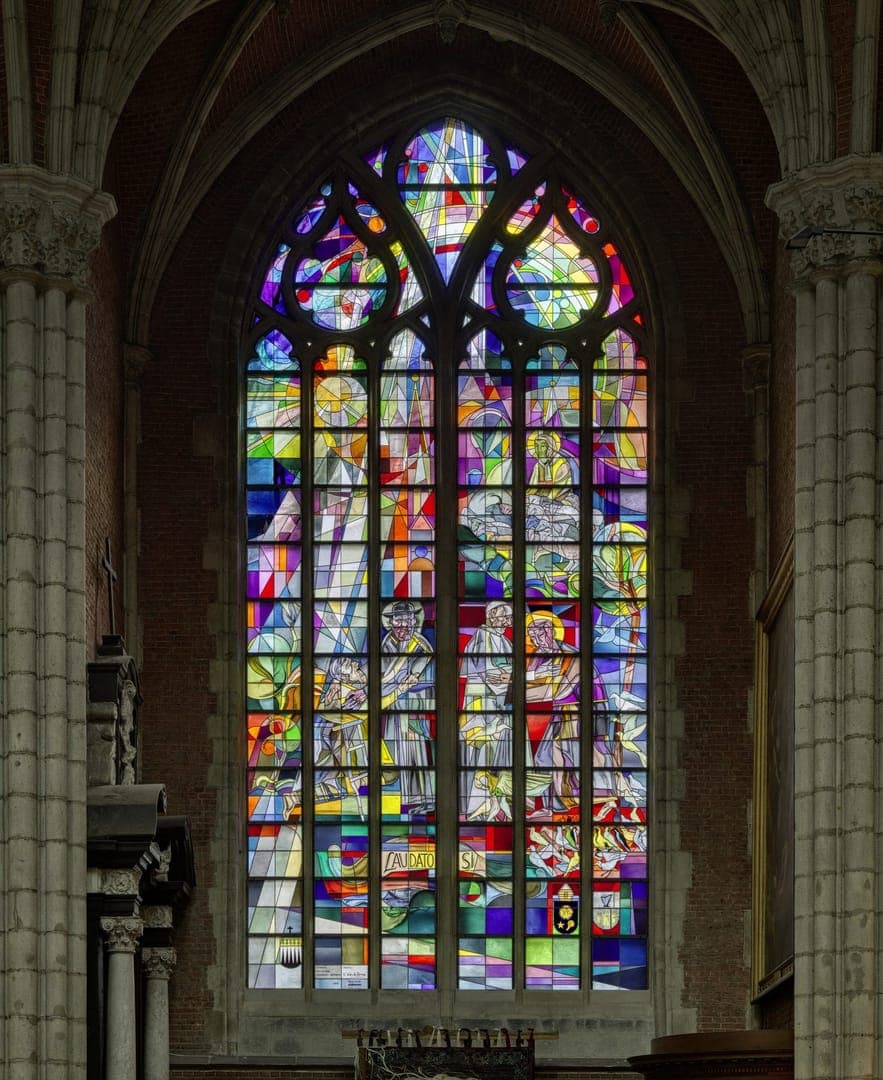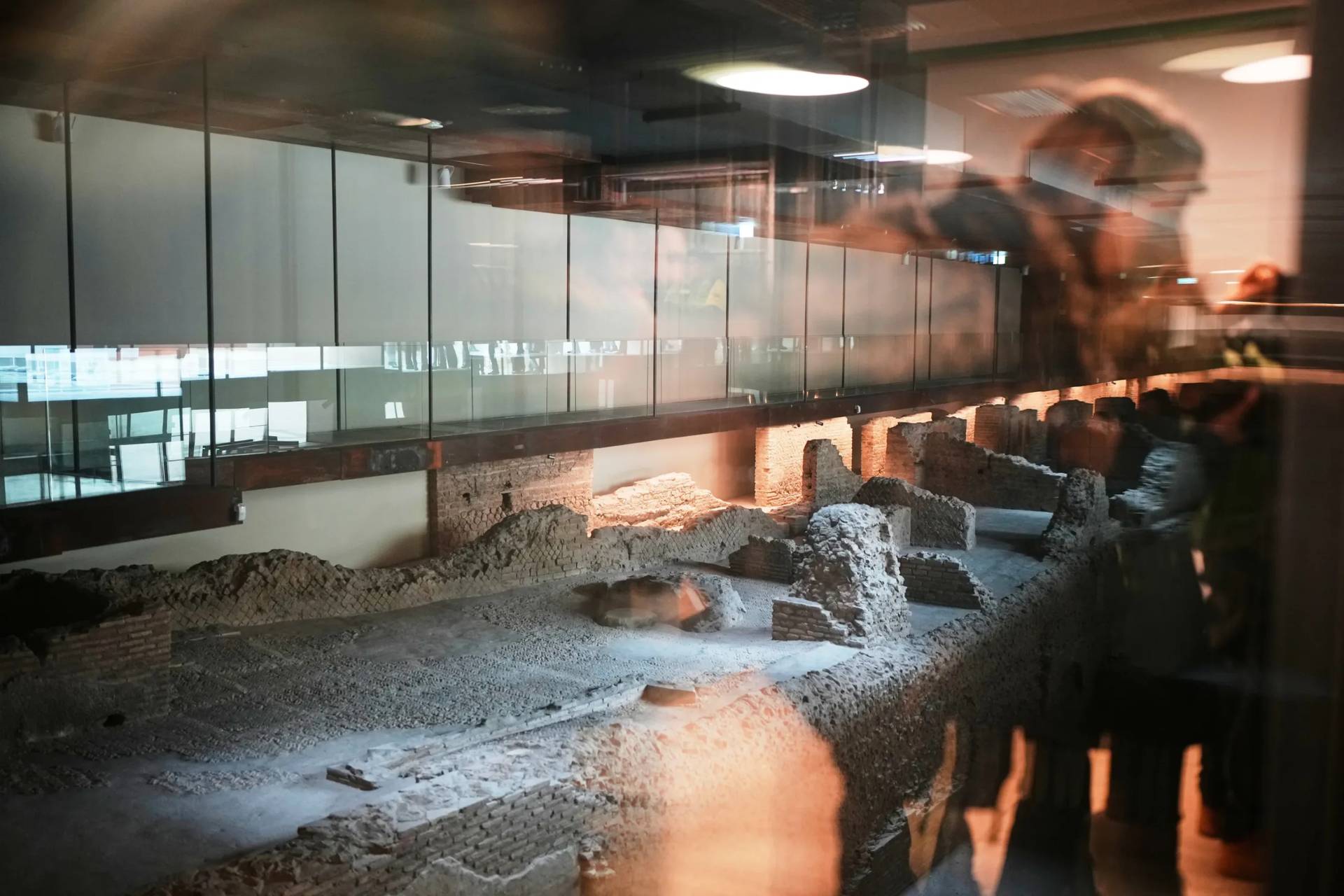Harold Van de Perre has been living with his wife in the beautiful Belgian city of Dendermond since 1966.
When the painter and stained-glass artist speaks, you immediately hold your breath to listen to his story. Van de Perre studied monumental architecture at the Sint-Lucas School of Architecture in Ghent. Later he became a teacher at the same school.
He has designed wonderful stained-glass windows for a lot of churches and chapels in Flanders, the Netherlands and Germany, and has also written various art books, about Rubens among others, and about his desire for beauty in the arts. He has also made various documentaries about art and has been a guest lecturer at the Russian Academy of Fine Arts in Saint Petersburg. And that’s just a part of his impressive curriculum vitae.
Deepest wish
In 2017 Van de Perre gives a lecture on Christian art at a meeting of the Equestrian Order of the Holy Sepulchre of Jerusalem, which promotes a Christian way of living and faithfulness to the Church and to the pope. At the end of his lecture someone asks him if he still has something to wish for. He jokingly says: “A Mercedes or a stained-glass window for the St. Bavo Cathedral in Ghent.”
Only two weeks later he hears to his great surprise that his deepest wish will be fulfilled: his friends had made a donation which enables him to design a stained-glass window for his beloved cathedral. After discussions with the diocese of Ghent, the Flanders Heritage Agency and the board of the parish, he was given total freedom to design a figurative stained-glass window. The only instructions he got are the words ‘Mercy’ and ‘Father Damien’, the Belgian saint also called ‘the martyr of charity’.
Canticle of the Sun
In his mind he hears Saint Francis of Assisi singing and in his heart he heard the saint’s Canticle of the Sun. And so the artist started designing the stained-glass window inspired by Laudato si’, the words at the beginning of seven of the verses of the Canticle of the Sun: ‘Praised be You’. It’s not a complete coincidence that Laudato si’ is also the title of Pope Francis’s much talked-about second encyclical on the environment.
A stained-glass window measuring 315 inches by 138 inches was a huge challenge, especially because it needed to fit in with the other stained-glass windows in the cathedral, dating from another period of time. The brand new window depicts seven different stories, all coming together. At its heart, there is a depiction of Pope Francis meeting Saint Francis of Assisi and to his left, Father Damien meeting a man who, like him, is suffering from leprosy. The leper is completely caught by the rays of sunlight passing from the top to the bottom of the stained-glass window.
Pictured above Father Damien is the heavenly Jerusalem, and to its left the sun from which springs a rainbow, as a sign of reconciliation between God and man. Next to Saint Francis we see his friends the birds, led by the dove of peace and the pelican symbolizing Christ’s offer and resurrection. Pictured above it is the image of the Good Shepherd with his sheep.
Renewal within tradition
Van de Perre is convinced that in this day and age the Christian faith isn’t passed on by theoretical, dogmatic and abstract theology. Instead it happens in a figurative way, like listening to Jesus through the stories of the Gospel and through the stories told by paintings, sculptures and stained-glass windows, like his own colorful work.
The stained-glass window called Laudato si’ was only unveiled on Dec. 14 of last year, but it looks like it has been there for ages, in perfect harmony with the other stained-glass windows, as the crown jewel in a magnificent cantata of color. Still, its style is contemporary.
“I’m living and working in this day and age,” the artist explained. “The beauty of this stained-glass window lies in the secret of ‘renewal within tradition’. There is a popular saying in Belgium: ‘living is like weaving and giving up your piece at the end of it.’ With this stained-glass window I’m offering my piece to the life in which I have been given the opportunity to weave for such a long period of time.”
This article was originally published in the Dutch Catholic weekly Katholiek Nieuwsblad on Jan. 11, 2019. It was translated for Crux by Susanne Kurstjens-van den Berk.















